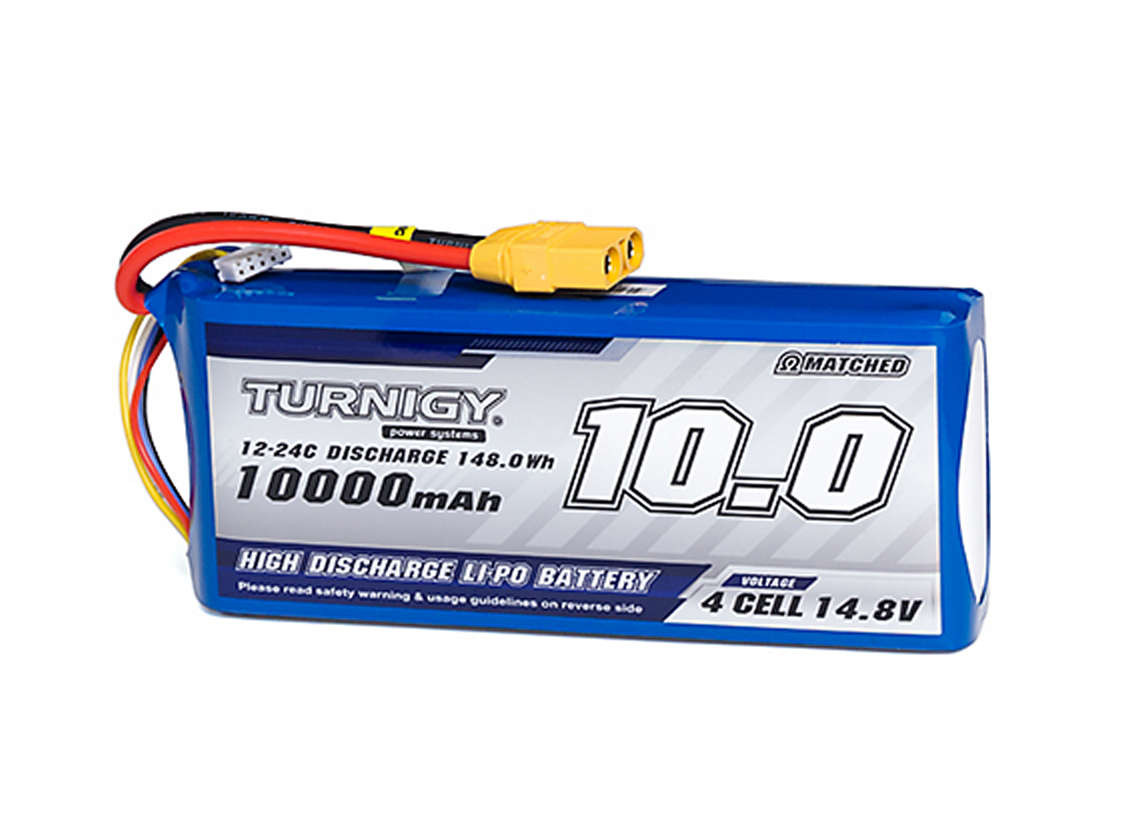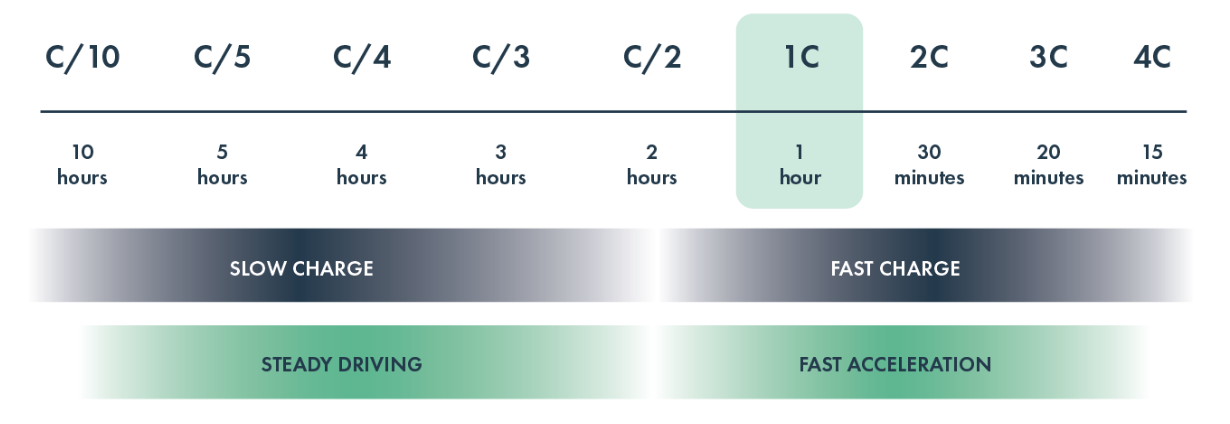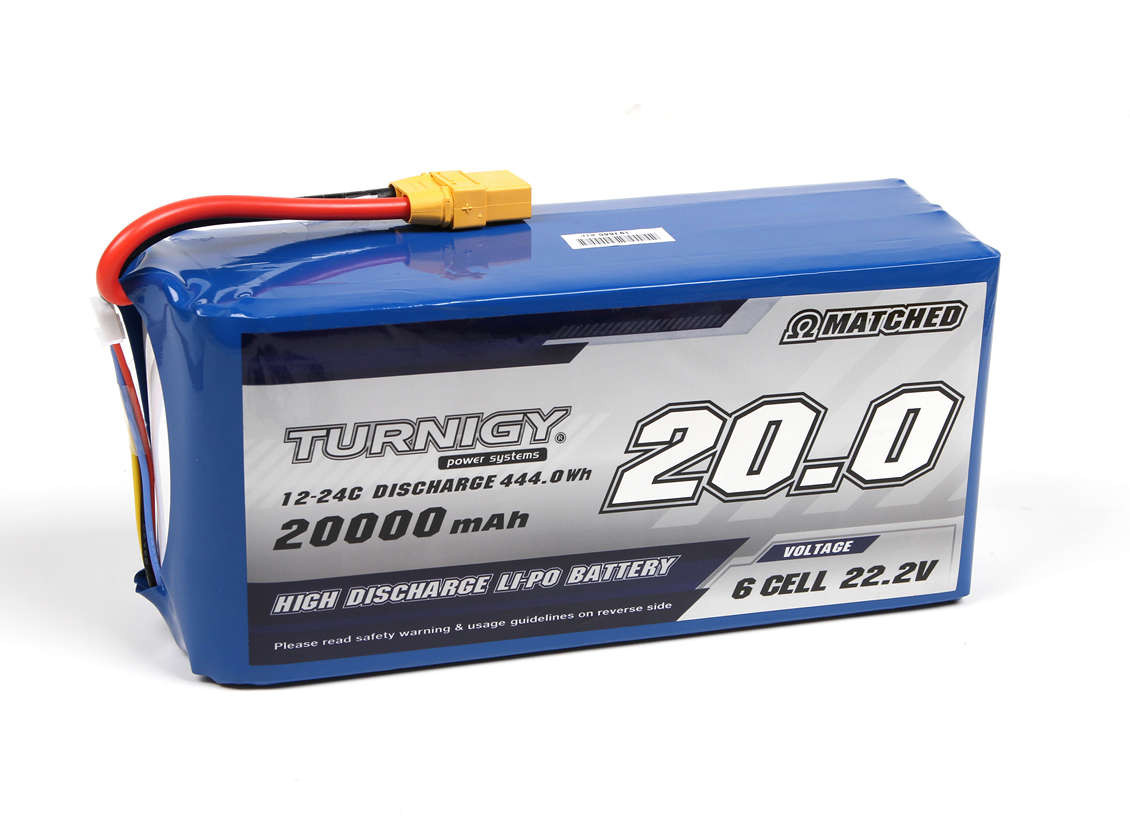 If you have ever used or purchased a lipo battery, you may have come across the term 12c.
If you have ever used or purchased a lipo battery, you may have come across the term 12c.
This marking indicates the maximum safe discharge rate of the battery.
Understanding what 12c means is crucial for ensuring your safety and preventing damage to your equipment.
Table of Contents
Introduction To LiPo Batteries
 LiPo Batteries: The Future of Powering Devices
LiPo Batteries: The Future of Powering Devices
LiPo batteries have revolutionized the way we power our devices.
Short for Lithium Polymer, these batteries are lightweight and have a high energy density.
They are commonly used in smartphones, drones, remote-controlled cars, and medical equipment.
Flexible Design
Unlike traditional rechargeable batteries that use metal casings, LiPo batteries utilize flexible polymer foils.
This allows them to be shaped into thin and compact forms, making them ideal for various applications.
Key Features
- High energy density
- Voltage ranges from 3V up to over 4V per cell
- Ability to discharge at very high currents (perfect for quadcopters)
However, it’s important to take proper care while charging and discharging LiPo batteries to ensure their longevity and safety.
Tip: Always use a LiPo-specific charger and never leave a charging battery unattended.
LiPo batteries are the future of powering devices.
Their lightweight design and high energy density make them ideal for a wide range of applications.
With proper care, they can provide long-lasting and reliable power for your devices.
LiPo Battery Voltage Basics
 Understanding Battery Voltage for LiPo Batteries
Understanding Battery Voltage for LiPo Batteries
Voltage refers to the potential energy a battery can provide, measured in volts (V).
It determines how much power your LiPo battery delivers.
Each cell of a LiPo has an average voltage rating of 3.7 V, but this varies depending on its state.
Fully charged cells have around 4.2 V while discharged ones go as low as 3 V or less.
Most devices are designed with specific voltage requirements.
Exceeding them may cause damage or pose risks like explosions and fires.
Incorrect charging parameters could lead to serious damages; always be cautious!
How to Ensure Safety
Understanding The Significance Of 9C On LiPo Batteries
 Understanding LiPo Battery Discharge Rate
Understanding LiPo Battery Discharge Rate
LiPo batteries’ discharge rate is a crucial factor to consider when choosing the right battery for your device.
The discharge rate is measured in C for capacity, and the number following C indicates the safe speed of discharging without damage or lifespan reduction.
What is 9C?
To achieve optimal device performance and longevity, it’s essential to understand the significance of 9C on LiPo batteries.
A 9C rating means that your battery can safely sustainably discharge at nine times its mAh (milliamp hour) capacity.
- For example, if you have a 1000mAh battery with a 9C rating, it can safely discharge up to 9000mA (or 9A)
Why is 9C Important?
A battery with a higher C rating can deliver more power to your device, which is essential for high-performance applications.
However, it’s crucial to choose a battery with a discharge rate that matches your device’s requirements to avoid damage or reduced lifespan.
Remember, a battery with a higher C rating doesn’t necessarily mean it’s the best choice for your device.
What Does C Rating Mean On A LiPo Battery
 Understanding C Rating for LiPo Batteries
Understanding C Rating for LiPo Batteries
LiPo batteries are a popular choice for powering remote control (RC) cars and airplanes due to their high energy density and lightweight design.
However, it’s crucial to understand the C rating when dealing with LiPo batteries to avoid damaging them and your equipment.
The ‘C’ in 12c refers to the battery’s discharge rate, indicating how much current can be safely drawn from it at once without causing damage.
This number represents your pack’s maximum safe continuous current draw based on its capacity.
A higher C rating means more power output and faster speeds for RC cars or airplanes while reducing the risk of overheating and equipment damage from using high voltage setups.
Key Takeaways
- Larger LiPo batteries generally have lower C ratings. This is because they have a larger capacity and can handle a higher current draw without overheating or damaging the battery.
- When purchasing a LiPo battery, check both voltage and Amp Hour (Ah) ratings as well. These ratings will give you a better idea of the battery’s overall performance and capacity.
- Avoid discharging your LiPos below their recommended minimum voltage levels to extend their lifespan. Over-discharging can cause irreversible damage to the battery and reduce its overall lifespan.
By understanding the C rating and following these key takeaways, you can safely and effectively use LiPo batteries to power your RC cars and airplanes.
How To Determine Maximum Discharge Current For Your LiPo Battery
 How to Determine Maximum Discharge Current for Your LiPo Battery
How to Determine Maximum Discharge Current for Your LiPo Battery
When it comes to LiPo batteries, knowing the maximum discharge current is crucial for optimal performance and safety.
Here’s how to determine it:
- Consider the C rating and temperature of your battery
- Multiply the C rating by the capacity to get the maximum drain rate
- For example, a 1000mAh 12C LiPo battery has a maximum discharge current of 12A
- Higher temperatures increase internal resistance and lower performance
- Colder temperatures may allow slightly higher rates due to better conductivity
- Keep in mind that aging batteries may not be able to handle their original rated currents
Always check your LiPo battery’s datasheet or consult with the manufacturer for accurate information on its capabilities.
Following these guidelines will help ensure optimal battery health and longevity.
The Effect Of High C Rated Batteries On Equipment Performance
 High C Rated Batteries And Equipment Performance: 5 Key Takeaways
High C Rated Batteries And Equipment Performance: 5 Key Takeaways
Lipo batteries’ performance is determined by their C rating, which refers to the rate of energy discharge.
High-C rated batteries deliver more power but can harm equipment not designed for them.
- Using a high-C battery on low-voltage electronics shortens both device and battery lifespan while overtaxing other system parts
- Very high-C Lipo batteries with low-resistance motors increase equipment performance
- High-C batteries are ideal for high-performance drones, RC cars, and other high-power devices
- When using high-C batteries, it’s important to match them with equipment designed for their power output
- Always follow manufacturer recommendations for battery and equipment use to avoid damage and ensure optimal performance
Remember, high-C rated batteries can deliver more power, but they can also harm equipment not designed for them.
Always use caution and follow manufacturer recommendations.
Using high-C rated batteries can significantly increase equipment performance, but it’s important to use them correctly.
When matched with equipment designed for their power output, high-C batteries are ideal for high-performance drones, RC cars, and other high-power devices.
Factors To Consider Before Choosing A High C Rated Battery
 How to Choose a High-C Rated Battery
How to Choose a High-C Rated Battery
When choosing a high-C rated battery, there are important factors to consider.
Discharge Rate
The discharge rate determines how quickly energy is supplied to your device.
Higher bursts of power require higher C ratings.
Capacity or Energy Density
Capacity or energy density is another factor to consider.
How much charge can be stored in one unit affects runtime.
For longer runtimes between charging cycles, choose batteries with higher capacities.
Note that high-capacity batteries have lower C ratings than smaller ones.
How to Make an Informed Decision
To make an informed decision when selecting a high-C rated lipo-battery, consider:
- The discharge rate
- The capacity or energy density
Remember, higher bursts of power require higher C ratings, and for longer runtimes between charging cycles, choose batteries with higher capacities.
By considering these factors, you can choose the right high-C rated battery for your device and ensure optimal performance.
Differences Between Low And High C Rate Batteries – Pros And Cons Explained
 Understanding Lipo Batteries: The Pros and Cons of Low and High C-Rate Options
Understanding Lipo Batteries: The Pros and Cons of Low and High C-Rate Options
Lipo batteries come with a C rate that indicates the maximum discharge current they can handle.
This is an important factor to consider when choosing the right battery for your needs.
Low-Rated Batteries
- 25C or lower ratings
- Affordable
- Provide longer flight times due to their low discharge rates
Low-rated batteries are perfect for casual hobbyists who want affordability and accessibility while enjoying extended flights.
However, they may not offer enough power for high-performance models and suffer from voltage drops under heavy loads.
High-Rated Batteries
- 75C or higher ratings
- Deliver consistent power output during intense maneuvers requiring bursts of speed or aggression
- Come at a higher cost than low-rated alternatives
High-rated batteries are ideal for high-speed situations where agility is crucial.
They excel when it comes to delivering quick surges without any noticeable drop-offs even if pushed hard over long periods.
However, they come at a higher cost than low-rated alternatives.
Remember, both types have pros and cons.
It’s important to choose the right battery for your specific needs.
Whether you’re a casual hobbyist or a professional pilot, understanding the pros and cons of low and high C-rate options is crucial to ensure you get the most out of your Lipo batteries.
Choose wisely and enjoy longer flight times and consistent power output during intense maneuvers.
Can You Safely Use A Higher Or Lower Than Recommended Discharge Rate
 How to Safely Use a 12C Lipo Battery with Discharge Rates
How to Safely Use a 12C Lipo Battery with Discharge Rates
When using a 12C lipo battery with discharge rates, safety should always be your top priority.
Failure to follow proper guidelines can result in damage to internal components and overheating.
Discharge Rates
- Higher than recommended discharge rates can cause damage to internal components and overheating
- Lower than recommended discharge rates can result in reduced performance but longer-lasting batteries
Your choice of discharge rate depends on your needs for longevity or performance.
Manufacturer Guidelines
To ensure safe operation, always check the manufacturer guidelines before use.
Never exceed the maximum C rating limitations.
Temperature Monitoring
It is important to monitor temperature changes during charging and discharging to prevent any potential risks.
Safety should always be your top priority when using a 12C lipo battery with discharge rates.
By following these guidelines, you can safely use a 12C lipo battery with discharge rates and avoid any potential risks.
Do All Devices Support The Use Of High C Rated Lipo Batteries
 Why High C Rated Lipo Batteries May Not Be the Best Option for All Devices
Why High C Rated Lipo Batteries May Not Be the Best Option for All Devices
Not all devices are created equal, and neither are their battery requirements.
While high C rated lipo batteries may seem like the best option for some devices, they may not always be the safest or most efficient choice.
Some devices have limitations on what type of battery they can handle due to safety concerns or technical specifications.
For instance, using a high C rated lipo battery in an incompatible device could damage it or even cause an explosion.
5 Things to Consider Before Choosing a Battery
Before purchasing a new battery, it’s important to consider the following:
- Check the manufacturer’s recommendations: Always check the manufacturer’s recommendations before purchasing any new battery.
- Opt for higher quality: Consider opting for lower capacity but higher quality batteries instead.
- Avoid cheap knockoff brands: Cheap knockoff brands are often dangerous and unreliable.
- Be cautious with aftermarket modifications: Be cautious with aftermarket modifications that claim to increase performance beyond factory settings; such changes might require different types of power sources than originally intended by manufacturers.
- Consult experts: If you’re unsure about compatibility issues between your chosen product(s), consult experts who specialize specifically within this field.
By keeping these 5 things in mind, you can ensure that you choose the right battery for your device and avoid any potential safety hazards.
Using a high C rated lipo battery in an incompatible device could damage it or even cause an explosion.
It’s important to always prioritize safety when it comes to choosing a battery for your device.
Don’t take any risks and always do your research before making a purchase.
Cheap knockoff brands are often dangerous and unreliable./
How To Get The Most Out Of Your High C Rated Battery
 Maximizing the Performance of Your High C Rated Batteries
Maximizing the Performance of Your High C Rated Batteries
To get the most out of your high C rated batteries, follow these tips:
- Use a charger that matches your battery’s voltage and capacity to avoid reducing its lifespan
- Monitor the battery’s voltage regularly and recharge before it gets too low to prevent over-discharging
- Use a quality balance connector during charging as cell imbalances can cause problems in the future
- Don’t let your high C rated batteries sit idle for extended periods without routine maintenance charge cycles or regular usage; they will degrade faster
- Store LiPo at partial charge levels instead of full charges when not in use to extend their overall lifespan
Remember these simple steps for optimal battery performance!
Conclusion
 Understanding the Significance of 12c on a Lipo Battery
Understanding the Significance of 12c on a Lipo Battery
Knowing the significance of 12c on a lipo battery is crucial for users.
It denotes the maximum discharge rate that can be safely handled without causing damage or safety risks.
Confirm Compatibility Before Purchasing
Before purchasing or using a lipo battery labeled as 12c, it’s important to confirm that your electronic device’s power requirements align with this safe limit.
Staying within this range not only prevents harm and hazards but also enhances longevity and efficiency of your batteries.
Key Takeaways
- 12c indicates the maximum safe discharge rate
- Confirm compatibility between device power requirements and limit
- Maintain safety while extending efficiency
- Choose wisely when selecting a lipo battery
Staying within the safe discharge rate not only prevents harm and hazards but also enhances longevity and efficiency of your batteries.
When selecting a lipo battery, it’s important to choose wisely.
By understanding the significance of 12c and confirming compatibility with your device, you can maintain safety while extending the efficiency of your batteries.

 LiPo Batteries: The Future of Powering Devices
LiPo Batteries: The Future of Powering Devices Understanding Battery Voltage for LiPo Batteries
Understanding Battery Voltage for LiPo Batteries Understanding LiPo Battery Discharge Rate
Understanding LiPo Battery Discharge Rate Understanding C Rating for LiPo Batteries
Understanding C Rating for LiPo Batteries How to Determine Maximum Discharge Current for Your LiPo Battery
How to Determine Maximum Discharge Current for Your LiPo Battery High C Rated Batteries And Equipment Performance: 5 Key Takeaways
High C Rated Batteries And Equipment Performance: 5 Key Takeaways How to Choose a High-C Rated Battery
How to Choose a High-C Rated Battery Understanding Lipo Batteries: The Pros and Cons of Low and High C-Rate Options
Understanding Lipo Batteries: The Pros and Cons of Low and High C-Rate Options How to Safely Use a 12C Lipo Battery with Discharge Rates
How to Safely Use a 12C Lipo Battery with Discharge Rates Why High C Rated Lipo Batteries May Not Be the Best Option for All Devices
Why High C Rated Lipo Batteries May Not Be the Best Option for All Devices Maximizing the Performance of Your High C Rated Batteries
Maximizing the Performance of Your High C Rated Batteries